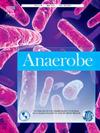艰难梭状芽孢杆菌在澳大利亚零售蔬菜和家庭表面的流行和分子类型。
IF 2.6
3区 生物学
Q3 MICROBIOLOGY
引用次数: 0
摘要
目的:在澳大利亚,社区发病的艰难梭菌感染(CDI)已经上升到80%的CDI病例。据报道,在许多社区来源,包括零售根类蔬菜中,艰难梭菌污染的流行率很高。在储存和处理受污染的蔬菜时,家居表面可能被艰难梭菌污染。本研究旨在确定零售根类蔬菜和家居表面存在的艰难梭菌的患病率和分子类型。方法:从2023年4月至2024年3月,每隔3个月对零售马铃薯(n=255)和洋葱(n=305)进行取样。环境样本来自昆士兰州(n=105)和西澳大利亚州(n=124)经常购买未洗土豆的家庭。从他们的工作台面/砧板、蔬菜储藏区和一个未洗的土豆收集棉签。将土豆皮、洋葱根和家庭拭子样本进行艰难梭菌富集培养。采用PCR分型和毒素基因检测对难辨梭菌分离株进行鉴定。结果:679份家庭样本中难辨梭菌培养率为5.6%,255份零售马铃薯样本中难辨梭菌培养率为35.3%,305份零售洋葱样本中难辨梭菌培养率为20.3%。在所有229个家庭中,15.7%的家庭至少有一个环境/土豆样本呈阳性。84种艰难梭菌核型(rt)中,056、286、101和125在西澳大利亚省蔬菜中占多数,rt101、qx098、014/020和qx601在昆士兰州蔬菜中最常见。结论:在零售蔬菜和家庭内发现了难辨梭菌的产毒菌株,突出了家庭内获得CDI的可能性。CDI高风险人群,如炎症性肠病或癌症患者,可以从安全处理和清洁家中难辨梭菌潜在来源的教育中受益。本文章由计算机程序翻译,如有差异,请以英文原文为准。
Prevalence and molecular types of Clostridioides (Clostridium) difficile on Australian retail vegetables and household surfaces
Objectives
Community-onset Clostridioides (Clostridium) difficile infection (CDI) has risen to >80 % of all CDI cases in Australia. High prevalence of C. difficile contamination has been reported in many community sources including retail root vegetables. Household surfaces may become contaminated with C. difficile when storing and handling contaminated vegetables. This study aimed to determine the prevalence and molecular types of C. difficile present on retail root vegetables and household surfaces.
Methods
From April 2023 to March 2024, retail potatoes (n = 255) and onions (n = 305) were sampled at 3-monthly intervals. Environmental samples were collected from homes of householders in Queensland (n = 105) and Western Australia (n = 124) who regularly purchased unwashed potatoes. Swabs were collected from their countertop/chopping board, vegetable storage area and an unwashed potato. Pooled potato peels, pooled onion roots and household swab samples underwent enrichment culture for C. difficile. C. difficile isolates were characterized by PCR ribotyping and detection of toxin genes.
Results
C. difficile was cultured from 5.6 % of all 679 household samples, 35.3 % of 255 retail potato samples and 20.3 % of retail onion 305 samples. At least one environmental/potato sample was positive for 15.7 % of all 229 households. Among 84 C. difficile ribotypes (RTs), 056, 286, 101 and 125 predominated on vegetables in Western Australia and RTs 101, QX 098, 014/020 and QX 601 were most common on Queensland vegetables.
Conclusions
Toxigenic strains of C. difficile were identified on retail vegetables and within households, highlighting potential for CDI to be acquired within households. Populations at high risk of CDI e.g. patients with inflammatory bowel disease or cancer, could benefit from education on safe handling and cleaning of potential sources of C. difficile in their homes.
求助全文
通过发布文献求助,成功后即可免费获取论文全文。
去求助
来源期刊

Anaerobe
生物-微生物学
CiteScore
5.20
自引率
8.70%
发文量
137
审稿时长
76 days
期刊介绍:
Anaerobe is essential reading for those who wish to remain at the forefront of discoveries relating to life processes of strictly anaerobes. The journal is multi-disciplinary, and provides a unique forum for those investigating anaerobic organisms that cause infections in humans and animals, as well as anaerobes that play roles in microbiomes or environmental processes.
Anaerobe publishes reviews, mini reviews, original research articles, notes and case reports. Relevant topics fall into the broad categories of anaerobes in human and animal diseases, anaerobes in the microbiome, anaerobes in the environment, diagnosis of anaerobes in clinical microbiology laboratories, molecular biology, genetics, pathogenesis, toxins and antibiotic susceptibility of anaerobic bacteria.
 求助内容:
求助内容: 应助结果提醒方式:
应助结果提醒方式:


